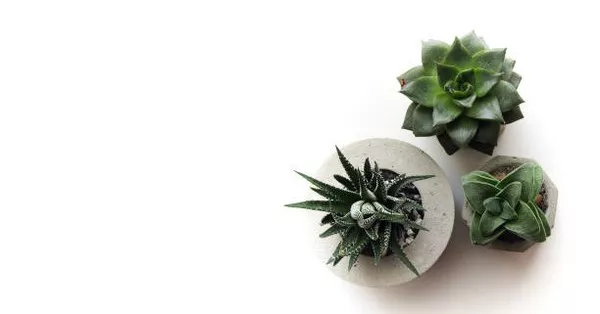Aloe, renowned for its soothing gel and striking rosette of leaves, is a beloved succulent that captivates plant enthusiasts worldwide. Propagating aloe succulents is a rewarding venture, offering the opportunity to expand your garden and share the resilience and beauty of these versatile plants.
Understanding Aloe Succulents: Exploring Varieties
Aloe belongs to a diverse family of succulents with over 500 different species. Commonly cultivated varieties include Aloe vera, Aloe aristata, and Aloe brevifolia. Each variety possesses unique characteristics, from the iconic gel-filled leaves of Aloe vera to the distinctive rosette shape of Aloe aristata. Understanding the specific traits of your aloe succulent is essential for tailoring the propagation process to meet the needs of the particular variety in your collection.
Selecting Healthy Aloe Plants: A Foundation for Success
Successful propagation starts with healthy parent plants. When choosing aloe plants for propagation, look for specimens with vibrant, firm leaves and no signs of pests or diseases. The parent plant’s health directly influences the quality of the propagated succulents. Inspect the leaves for any blemishes, discolorations, or soft spots, as these may indicate underlying issues that could affect the success of the propagation process.
Choosing Propagation Methods: Options for Aloe Success
Aloe succulents can be propagated through various methods, with offsets (pups) and leaf cuttings being the most common. Offsets are small, genetically identical shoots that emerge at the base of the parent plant, while leaf cuttings involve detaching individual leaves for propagation. The choice of method depends on the aloe variety and personal preference. Both methods have their unique advantages, offering enthusiasts flexibility in expanding their succulent garden.
Gathering Tools and Supplies: Essentials for Aloe Propagation
Before delving into propagation, gather the necessary tools and supplies. Clean, sharp scissors or pruning shears are crucial for making precise cuts without causing damage to the plant tissues. Well-draining succulent soil, small pots or containers, and a misting bottle for maintaining moisture levels are essential components. Sterilize your tools to reduce the risk of infection, ensuring a healthy start for the propagated aloe succulents.
Harvesting Offsets (Pups): Natural Proliferation
Offsets, commonly referred to as “pups,” are natural offshoots that emerge from the base of the parent aloe plant. To harvest offsets, gently remove them from the parent plant using clean scissors or your hands. Ensure that each offset has roots attached for successful propagation. Allow the offsets to air dry for a day to form calluses, reducing the risk of rot during the rooting process. Plant the callused offsets in well-draining succulent soil, burying them deep enough for stability.
Taking Leaf Cuttings: Aloe Regeneration
Leaf cuttings are an alternative method for propagating aloe succulents, particularly when offsets are not readily available. Select healthy leaves from the parent plant, making clean cuts near the base using sharp scissors or pruning shears. Allow the cut ends to air dry for a day to form calluses. Plant the callused ends in succulent soil, burying them slightly to promote root development. While leaf cuttings may take longer to mature than offsets, they offer a fascinating view of aloe regeneration.
See also: How to propagate succulent echeveria: A Simple Guide
Rooting and Early Care: Nurturing Growth
Once offsets or leaf cuttings are planted, focus on rooting and early care. Place the pots in a location with bright, indirect light to encourage root development. Avoid exposing the newly planted succulents to intense sunlight, as they may be more susceptible to stress during this phase. Keep the soil consistently moist but not waterlogged, misting the cuttings lightly if needed. As the roots establish and new growth emerges, gradually acclimate the young aloe succulents to their preferred light conditions.
Transplanting and Growth: Accommodating Maturity
As the propagated aloe succulents grow and mature, consider transplanting them into larger pots to accommodate their increasing size. Use well-draining succulent soil and follow the same principles of planting as during the initial propagation. Allow the succulents to continue their growth journey, adapting to their new surroundings. Aloe succulents are known for their versatility, making them suitable for various containers, from individual pots to larger garden arrangements.
Monitoring and Adjustments: Ensuring Optimal Conditions
Regular monitoring is crucial as your propagated aloe succulents continue to grow. Pay attention to their water needs, adjusting the watering frequency based on the specific requirements of the succulents and the environmental conditions. If you notice any signs of stress, such as wilting or changes in coloration, assess the growing conditions and make necessary adjustments. Aloe succulents are generally low-maintenance, but attentive care enhances their overall health and appearance.
Sharing the Bounty: Aloe Propagation Success
Successfully propagating aloe succulents is a gratifying accomplishment that provides the opportunity to share the bounty with fellow enthusiasts. Consider gifting propagated aloe plants as thoughtful presents or incorporating them into your succulent garden to create a diverse and thriving display. The journey from offsets or leaf cuttings to flourishing aloe succulents reflects the resilience and beauty inherent in the world of aloe propagation.
Conclusion
Propagating aloe succulents is a fulfilling and educational experience that allows plant enthusiasts to witness the magic of regeneration and share the beauty of these resilient plants. By understanding the specific needs of aloe succulents and following the step-by-step guide provided in this article, you can embark on a successful propagation journey. Whether through offsets or leaf cuttings, each method offers a unique perspective on the growth and maturation of these iconic succulents. As you nurture and propagate aloe succulents, revel in the beauty of their rosette formations and the joy of cultivating a thriving succulent collection.


